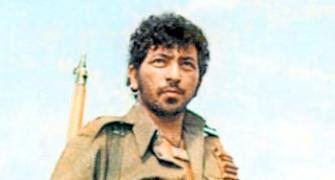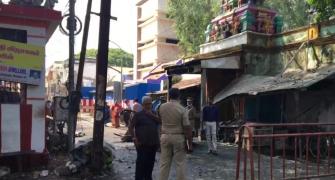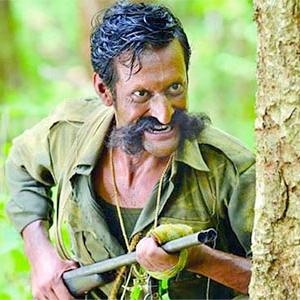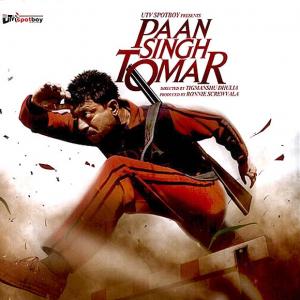Even as our tier-2 and tier-3 cities become increasingly well-mapped, and well-documented through myriad tech-driven data, the Indian film-maker's dominantly urban gaze turns to regions not crowded by data, area codes, or directions, observes Debarghya Sanyal.

Driven by the immense global popularity of Sholay (1975), film scholars have often demarcated a separate sub-genre of Western films for India -- Curry Western.
The nomenclature maintains the practice of marking the regional roots of these sub-genres with food.
Thus, Spaghetti Westerns for Italy, and Ramen Westerns for Asia. This naming pattern has now been acknowledged as regionalist and is usually avoided.
Curry Westerns are better known as Dacoit Westerns, as they combine the conventions of Indian dacoit films such as Mother India (1957) and Gunga Jumna (1961) with those of Westerns.

However, we might need to rethink that naming as well.
New Indian Western films and Web series have left behind their dacoit roots. They have also moved away from the Chambal. Their new destination is the dunes of Rajasthan.
The result is a momentous and essential change in the very approach to visualising small-town crime, culture, and politics.
For starters, with the galloping hordes of dakus out of the way, the definition of crime becomes more complex.
In the midst of an undulating expanse of golden sands, one now finds a thriving empire of drug peddlers -- as in Saas Bahu aur Flamingo on Hotstar.
In Dahan, another desert village is torn between the fear of a bloody local cult and the threat of corporate land-grab.
The rocky craggy terrains of the Chambal valley housed humble but idyllic villages -- the mute victims of dakus.
Now, the vast uncharted expanse of Thar hides murder and mayhem in the open.
Old havelis gestate ages of superstitions, channelled through ritualised brutality on women and children.
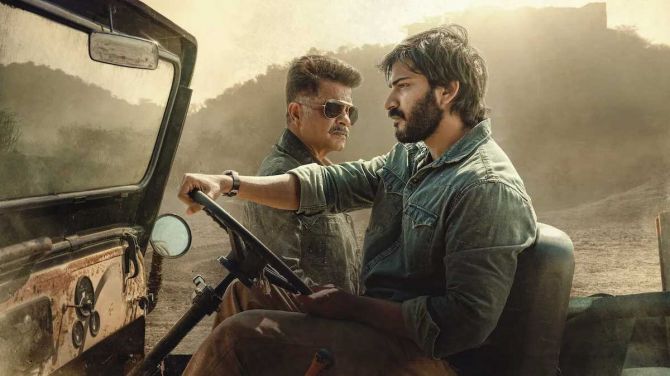
Familiar character archetypes are rewritten.
In Netflix's Thar, there's no rest for the world-weary man of law (Thakur from Sholay, Sheriff Ed Tom Bell from No Country for Old Men, and others), played here by Anil Kapoor.
Despite his best efforts, he is too understaffed and underequipped to make any substantial progress in a case involving murder and drugs.
Harshvardhan Kapoor's adoption of 'The Man with No Name' persona (although he does maintain an alias), isn't the gun-blazing outlaw who the lawman can trust to take care of business. He keeps to his own meandering course until their paths collide towards the very end.
In Amazon Prime's Dahaad, the infamous Black outlaw who chose to counter ages of systemic oppression with a pair of Colt single-action army revolvers might find a reflection in a woman of 'low caste' straining to uphold the law with her wits.
But as we delve deeper, such parallels increasingly appear superficial. And the core concerns of the films and series take us back to a popular trope in the portrayal of western Rajasthan -- obscurity.
Even as our tier-2 and tier-3 cities become increasingly well-mapped, and well-documented through myriad tech-driven data, the Indian film-maker's dominantly urban gaze turns to regions not crowded by data, area codes, or directions.
And Rajasthan emerges ready by precedence.
Consider: Kalpana Lajmi's Rudaali focused on the whimsical eccentricities of a community the urban Indian did not connect with.
In Amol Palekar's Paheli, the lens of local folklore became an excuse for portraying the region as both exotic as well as 'ex-centric' (outside the norm).

Ghosts of these old tales haunt the new-age portrayal of Thar, where the remnants of mirages, camels, and folk magic lay the groundwork for new Westerns to thrive.
Aarya, for instance, is both Godmother and Zubeida. Trapped in a new-age haveli whose walls men cement with lies and deceit, Sushmita Sen's protagonist displays layers of both futility and triumph and instead of seeking an escape, secures the throne for herself.
Rudali's Dimple Kapadia takes on the hues of Godmother's Shabana Azmi -- Rambhi -- while her paltan of bahus are inspired by characters in Radhika Apte's Parched.
In most of these narratives, the desert's deep-seated violence and weathering of the human body evolves into a definitive feminist metaphor and ultimately lays bare the myriad hues of women's unacknowledged desires.

But the operating trope is still obscurity.
In Dahaad and Thar, police procedures are bungled and arbitrary in the vast unwired stretch.
In Flamingo and Aarya, drug empires thrive insulated by inaccessibility.
Thus, the new age 'Curry Western' does carry over the hubris of the John Waynes, Sergio Leones, and Clint Eastwoods, by pinning down a harsh terrain and its underexplored cultures to shades of uncertainty, suspicion, murk, and oppression.
The feminist fantasies of various 'Rani Baa' characters, controlling or carving out their own kingdoms in the sand, also at times fall prey to the perception of India's western frontier as a region sharply divided between massive walled-in mahals and ferocious expansive deserts.
But, most crucially, at a time when content on OTT platforms increasingly turns to the small town, the reinvention of the subgenre has begun a much-needed excavation of a cultural space that lies even beyond the blurry depths of what's popularly known as 'the interiors'.
Feature Presentation: Ashish Narsale/Rediff.com




